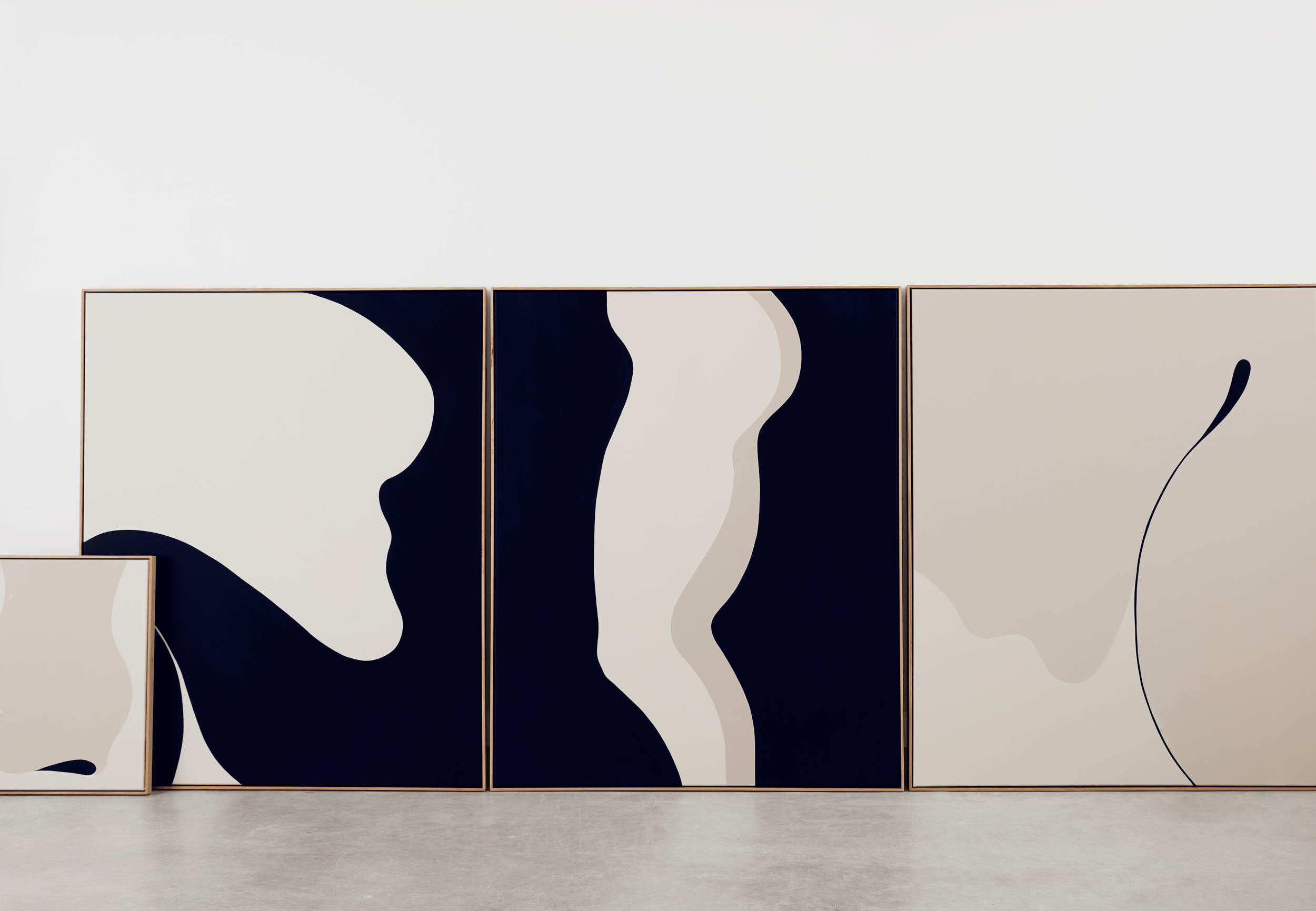Abstraction and Figuration: Finding Form in the Work of Caroline Walls
The curve of a breast, the bend of a knee, the crook of an elbow – these shapes are within us, they are us, and we recognize them immediately and see them without meaning to.
Caroline Walls uses a simplified, graphic language to explore the human form. Using stylized lines and flat colors, she shifts the focus away from the specificities of the individual and towards a more generalized form, understood across all cultures.
Walls describes the complexities of the human form in a starkly minimal style. Her paintings break with traditional figurative art, as the background is not pushed away to emphasize the figure. Instead, Walls’ flat style holds one’s attention equally over the surface of the canvas.
Abstraction and figuration are often thought of in opposition to one another. However, questions of what to present and how to present it are core concerns of both, and many of the most interesting artists tread the line between revealing and concealing, asking and telling.
A sense of balance runs through Walls’ work, coming together around the point of tension between positive and negative space, dark and light, micro and macro. Walls create obstacles that the viewer must overcome - manipulating the scale of the figure in relation to the canvas and settling upon poses that are open to interpretation. Walls errs on the side of ambiguity, but the innate and immediate sense of the organic appears even before the eye has discovered the human form within the composition.
She artfully crops the figure to abstract and intrigue. By zooming into the peculiarities of the form, the human figure becomes a series of folds, curves and waves. Through this process, the viewer is freed from identifying with, or relating to, the human form. The shapes and lines can be appreciated profoundly.
Pale and subtle to monochromatic and stark, Walls paints with cream, nude, tan and terracotta. The earthy color palette is neutral, yet it is not without emotion – tones speak to both the body and the landscape. The colors are reminiscent of cave drawings, ancient artifacts and of the baked earth of Walls’ native Australia. There is a pleasing sense of warmth that emanates from these images - they feel Mediterranean, African, Antipodean - they raise the temperature of the room in a way that isn't provocative or overt.
Walls pushes the representation of the figure to a point of extreme, moving away from anatomical correctness and closer towards abstraction. The calves are heavy, the thighs are thick, the breasts neat. The mechanics of the body are lost under Walls’ undulating curves and lines, and in turning away from its functional form, the body becomes a motif.
Ancient Greek pottery was decorated with the figures of Gods, athletes and Olympians – a celebration of the body’s beauty, strength and achievements. Using a two-tone colour palette, the Ancient Greek’s were masterful at creating a sense of pattern and movement in their designs. Describing the body with great economy, the highly exaggerated forms of Ancient Greece – where thigh muscles bulge, buttocks hold firm and biceps are the epitome of strength – accentuate the formal qualities of the body, to the detriment of its function, with muscularity that is so extreme that it has gone beyond representation and towards the symbolic.
At first glance, Walls offers the viewer the simple pleasure of a beautiful line, which, upon examination, blossoms with meaning, depth and history.













